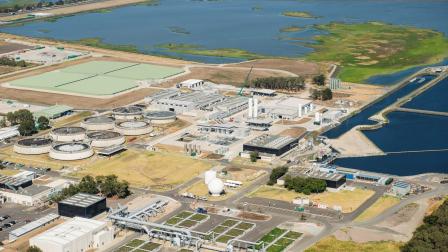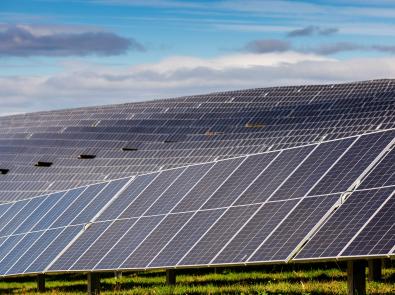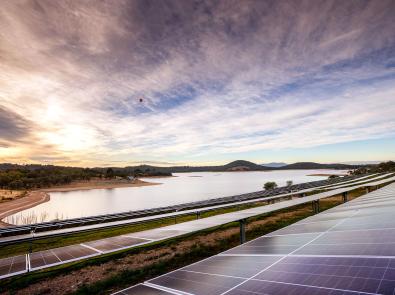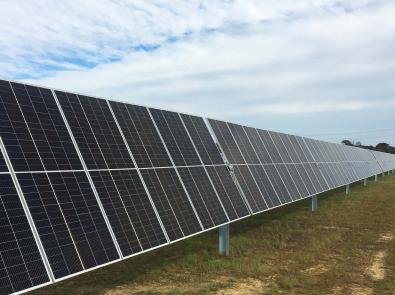We’re building solar farms at our treatment plants, helping generate renewable energy. Better for Melbourne and our planet.
Along with hydropower and bioenergy, solar is one of the ways we’re generating renewable energy at our facilities – helping to protect our environment for future generations.
Why Solar
It takes a lot of energy to transfer and treat sewage across Greater Melbourne. The water industry is one of the largest contributors to greenhouse emissions in Victoria. This is largely due to the high direct emissions from sewage in treatment systems, and the electricity needed to treat it.
That’s why we pledge to halve our net emissions by 2025 and reduce them to net zero by 2030. We also commit to sourcing 100% of our electricity from renewables by the end of 2025.
Along with hydropower and bioenergy, solar is one of the ways we’re generating renewable energy at our facilities – helping to protect our environment for future generations.
How solar panels work
Solar panels contain photovoltaic cells, placed between two layers of semiconducting material: one positively charged, and one negatively charged. These release electrons when hit with the photons from sunlight, creating an electric field.
Our solar farms use ‘bifacial’ panels that can generate energy from both sides. The panels are attached to a rotating bar that uses sensors to follow the sun, maximising energy production all year round.
Our solar projects
A small-scale solar array was built at our Somerton Water Pump Station in 2022. We've also built two larger solar farms at our water and sewage treatment plants.
Winneke Solar Farm
Our new Winneke Solar Farm helps power the Winneke Water Treatment Plant, which treats water from Sugarloaf Reservoir nearby. The Winneke solar farm generates 12,400 Megawatt hours/annum on average.
A walking track surrounds the solar farm, allowing the public to see it in action.
Key facts:
- Number of panels: 19,000 (over 10 hectares)
- Power production: 12,400 megawatt hours per year
- Emissions reduction: 12,000 tonnes of carbon per year (equal to the amount generated by 2500 households)
In an Australian first, we used terrain tracking sensors to build the farm on the area’s sloping hills. This helped us install the panels with only minimal disturbances to the soil, protecting water quality in the reservoir.
Eastern Treatment Plant Solar Farm
Our solar farm at the Eastern Treatment Plant is one of Australia’s largest ‘behind-the-meter’ solar installations.
Key facts:
- Number of panels: 39,000
- Power production: 30 gigawatt hours per year
- Emissions reduction: 28,800 tonnes of carbon per year (equal to the amount generated by 6,000 households)
You may also like...
Sugarloaf Reservoir
Sugarloaf Reservoir supplies the northern, western and central suburbs of Melbourne.
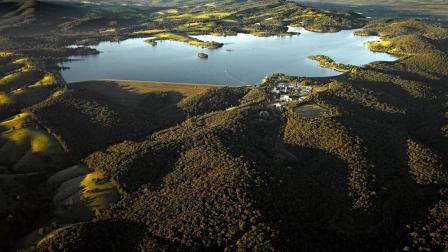
Eastern Treatment Plant
Learn how the treatment plant uses innovative processes to turn sewage into Class A recycled water.
